30 Bold Asian Seafood Soups That Warm The Soul
Asian seafood soups represent a fascinating culinary journey through rich coastal traditions and oceanic flavors.
Delicate broths carry complex layers of taste that dance across your palate with remarkable depth.
Maritime ingredients blend seamlessly with aromatic herbs and regional spices, creating symphonies of comfort and excitement.
Coastal communities have perfected these liquid masterpieces over generations, transforming simple seafood into extraordinary gastronomic experiences.
Each recipe tells a unique story of cultural heritage and local ingredients, reflecting the diverse marine landscapes across different Asian regions.
Subtle nuances distinguish these soups, making them far more than mere meal components.
Regional techniques and secret family recipes elevate these liquid delicacies beyond standard cooking approaches.
Let these 30 signature Asian seafood soups inspire your next culinary adventure:
Signature Asian Seafood Soups to Warm You Up
Asian seafood soups capture the essence of the sea in every steaming bowl. Delicate or bold, spicy or mild, the flavors offer a sense of adventure and comfort that’s perfect for any season.
Tom Yum
Tom yum is an iconic Thai soup bursting with complex flavor profiles that balance spicy, sour, and aromatic elements.
Originating in central Thailand, this legendary soup combines shrimp, lemongrass, kaffir lime leaves, and fiery Thai chili peppers in a vibrant broth.
Fragrant ingredients like galangal, shallots, and fish sauce create its signature tangy base that awakens every taste bud.
Fresh mushrooms add earthy texture to the soup's bright profile.
Traditionally served as an appetizer, tom yum arrives garnished with fresh coriander leaves.
Restaurants and street vendors across Thailand offer their unique interpretations of this beloved national dish.
Diners typically enjoy tom yum alongside steamed rice, complementing its intense flavor spectrum.
Laksam
Laksa Kelantan are delicate rice noodle rolls swimming in a rich, creamy fish broth that defines Malaysian coastal cuisine.
Malaysian fishermen originally crafted this soup as a hearty meal using fresh seafood and local ingredients.
Rice flour batter steamed into thin sheets creates the signature rolled noodles that absorb the broth's complex flavors.
Coconut milk provides a smooth, silky base for the broth, which simmers with fragrant ginger and garlic.
Shallots and fish paste intensify the soup's depth and umami profile.
Sliced cucumbers and green beans add crisp texture and freshness to each serving.
Spicy sambal accompanies the dish, offering an optional heat boost for adventurous diners.
Vietnamese Sweet And Sour Soup (Canh Chua Ca)
Canh chua ca represents a vibrant Vietnamese soup bursting with a complex flavor profile that balances sweet, sour, and spicy elements in a single bowl.
Tamarind-based broths form the foundational flavor of this traditional dish, creating a tangy liquid that highlights fresh regional ingredients.
Fish like catfish, carp, or snakehead form the protein base of the soup, complemented by chunks of pineapple, tomatoes, and okra.
Bean sprouts add crisp texture to the liquid preparation, while fresh cilantro provides a bright garnish.
Vietnamese families often serve this soup alongside steamed rice for a complete meal.
Penang Laksa
Penang laksa is a spicy Malaysian street food symphony of flavors that transforms simple ingredients into an explosive culinary experience.
Mackerel or sardines form the robust broth's foundation, simmered with tangy tamarind and aromatic lemongrass.
Chili peppers provide intense heat while creating complex layers of taste in each spoonful.
Shrimp paste adds deep umami undertones that distinguish this noodle soup from other regional dishes.
Ginger flower buds, pineapple slices, mint, and onions contribute fresh, bright garnishes that balance the soup's intense profile.
North-western Penang state claims this dish's origin, making it a celebrated regional specialty.
Generations of home cooks have perfected its recipe through careful technique and traditional ingredients.
Travelers and locals alike crave this rich, multilayered noodle soup that captures Malaysian street food culture in one powerful bowl.
Katong Laksa
Katong laksa are spicy, coconut-milk-based noodle bowls originating from Singapore's Katong neighborhood, featuring uniquely pre-cut rice noodles designed to be eaten exclusively with a spoon.
Rich shrimp-infused broth forms its aromatic foundation, blending dried shrimps, complex herbs, and intense spices into a memorable culinary experience.
Small pieces of seafood like shrimps, fishcakes, and cockles float alongside tofu puffs and fish balls in this signature dish.
Sambal sauce adds extra heat and depth to the already complex flavor profile.
Traditional preparation involves carefully crafted laksa paste that determines the broth's distinctive taste.
Singapore's food culture celebrates this regional specialty as a true representation of local flavors.
Each serving combines multiple textures and ingredients into one harmonious bowl.
Regional cooking techniques ensure every spoonful delivers a balanced, memorable experience.
Assam Laksa
Assam laksa reigns supreme as a tangy Malaysian fish noodle soup bursting with complex flavors from tamarind's sour punch.
Southeast Asian culinary traditions birthed this iconic dish among coastal fishing communities seeking nourishing meals from readily available ingredients.
Rice noodles form its substantial base, complemented by freshly shredded fish that infuses deep maritime essence into every spoonful.
Sliced vegetables like cucumber, onion, and lettuce add crisp texture and refreshing contrast to the robust broth.
Generations of Malaysian families have embraced this soup as a comfort food staple that reflects regional maritime culture.
Tamarind provides the signature acidic notes that distinguish assam laksa from other noodle soups.
Balanced spices and fresh ingredients create a harmonious culinary experience that continues to delight diners across Malaysia and beyond.
Tekwan
Tekwan are Indonesian fish balls swimming in a fragrant broth that originate from Palembang, South Sumatra.
Fish paste, tapioca, and flour create the signature bouncy spheres boiled or fried for maximum texture.
Shrimp or fish stock forms the soup's base, which gets layered with mushrooms, dried lily flowers, jicama slices, garlic, and scallions.
Vermicelli noodles sometimes join the mix, adding extra substance to this comforting dish.
Street food stalls and Indonesian restaurants frequently feature tekwan as a popular menu item.
Diners enjoy the soup's complex flavors and delicate balance of textures.
Generations have savored this traditional South Sumatran specialty that reflects Indonesia's rich culinary heritage.
Sweet And Sour Tamarind Soup (Canh Chua)
Canh chua embodies Vietnamese culinary complexity through its signature sour-sweet flavor profile that balances multiple taste sensations in one remarkable soup.
Originating from Vietnam's Mekong Delta region, this vibrant soup typically features seafood like eel, shrimp, or catfish swimming in a tangy broth enriched with pineapple and tamarind.
Tomatoes, okra, and bean sprouts add depth and texture to each spoonful, while fresh herbs provide aromatic brightness.
Fresh ingredients define its character, creating a harmonious blend of sour, sweet, and savory notes.
Traditionally served alongside steamed jasmine rice or rice vermicelli noodles, canh chua represents comfort and culinary creativity.
Regional cooks often personalize their version, making each bowl a unique expression of Vietnamese home cooking.
Sinigang Na Hipon
Sinigang na hipon electrifies Filipino cuisine with its bold, tangy broth that transforms simple shrimp and vegetables into a symphony of sour and savory flavors.
Maritime Philippines cherishes this iconic soup for its complex taste profile built around tamarind's sharp essence.
Generous portions of succulent shrimp swim alongside a colorful medley of vegetables like water spinach, string beans, and banana peppers.
Traditional recipes incorporate ginger and fish sauce to enhance the soup's depth and complexity.
Cooks often experiment with alternative souring agents such as green mango, guava, or calamansi to create unique variations.
Families typically prepare this dish during cooler weather or when craving a comforting meal.
Regional differences emerge through ingredient selections and personal cooking techniques.
Home kitchens across Philippine islands celebrate sinigang na hipon as a beloved culinary treasure that connects generations through its warm, aromatic embrace.
Fish Soup Bee Hoon
Fish head bee hoon is a legendary Singaporean soup showcasing complex maritime flavors through its rich, milky fish broth and carefully selected seafood ingredients.
Garoupa, snakehead, pomfret, and batang fish create the soup's robust protein base, carefully simmered with rice vermicelli noodles and fresh mustard greens.
Fishmongers often enhance the broth's depth by adding subtle touches of brandy or rice wine for an extra layer of complexity.
Traditional hawker stalls prepare this dish with meticulous attention to balancing spices and textures.
Generous portions of fish head or fish slices float prominently in the creamy white soup, offering diners a luxurious seafood experience.
Fragrant scallions garnish the surface, adding a fresh, sharp contrast to the rich liquid.
CNN recognized this soup as one of Singapore's forty essential culinary experiences in 2010.
Altang
Myeongnan jjigae is a fiery Korean stew centered around fresh or marinated pollack roe swimming in a spicy dashi-based broth blazing with gochujang paste.
Scallions, bean sprouts, and daikon radish float alongside the vibrant roe, creating a bold flavor profile that warms you from the inside out.
Tofu sometimes joins this spicy ensemble, adding creamy texture to the intense soup.
Korean home kitchens treasure this dish for its robust and comforting qualities.
Fishermen in coastal regions first developed the recipe to use their abundant pollack catch.
Winter meals especially welcome this warming soup's deep umami notes.
Sea salt, red pepper flakes, and fermented seasonings complete the stew's complex taste experience.
Mohinga
Mohinga is Burma's beloved fish and rice noodle soup that transforms humble ingredients into a complex, flavorful breakfast staple beloved across regions.
Rivers and coastal communities first developed this nutritious dish centuries ago, using fresh local fish and aromatic spices.
Myanmar street vendors frequently sell steaming bowls of mohinga from early morning until midday, making it a quintessential morning meal.
Traditional preparation involves creating a thick fish broth simmered with onions, garlic, and turmeric, then layering rice noodles and additional toppings.
Portuguese and Southeast Asian culinary influences shaped its early development, contributing to its unique flavor profile.
Early versions emerged as an affordable meal for working-class families, eventually becoming a national culinary symbol.
Historical records suggest mohinga's origins date back to the first century, reflecting Burma's rich gastronomic heritage.
Chueotang
Mudfish soup stands as a robust Korean delicacy featuring ground mudfish blended with spicy chili paste and fermented soybean paste.
Seoul cooks prepare this soup using whole fish, while Namwon's version highlights ground mudfish as its signature preparation.
Green vegetables like mustard greens, scallions, and cabbage enhance the soup's complex flavor profile.
Ginger adds a warm, aromatic depth to the broth.
Traditional preparation methods emphasize fresh, local ingredients.
Mudfish provides a unique protein base that distinguishes this soup from other Korean stews.
Spicy and savory notes create a memorable dining experience that reflects Korean culinary traditions.
Shark Fin Soup (Yu Chi Geng)
Shark fin soup represents an elite Chinese delicacy steeped in historical prestige and cultural significance, traditionally served by emperors to demonstrate social status and wealth during grand banquets.
First created during the Sung Dynasty, this controversial soup symbolizes prosperity and respect in Chinese celebrations, featuring shark fin's unique gelatinous texture as its primary ingredient.
Shark fins provide minimal flavor but contribute a distinctive soft consistency to the chicken or seafood-based broth.
Historically reserved for imperial feasts, the soup became a marker of social standing and generosity among wealthy Chinese families.
Guests receiving this expensive dish felt deeply honored by the host's extravagant gesture.
Modern consumption remains contentious due to environmental concerns about shark population preservation.
Marine conservation groups actively campaign against shark fin harvesting practices.
Scientific research continues to challenge the soup's cultural significance against ecological impact.
Sinigang Na Bangus
Sinigang na bangus embodies Filipino comfort food through its signature tangy tamarind-based broth that perfectly highlights milkfish's delicate flavor.
Filipino families cherish this sour soup featuring fresh bangus simmered with multiple vegetables like kangkong, sitaw, and eggplant.
Tamarind provides the distinctive souring element, though cooks sometimes substitute green mangoes or calamansi for variety.
Onions and tomatoes form the initial flavor foundation, creating depth in the broth.
Fish sauce and pepper enhance the soup's complex taste profile.
Sea salt balances the sourness and brings out the fish's natural richness.
Cooking happens gradually, with vegetables added at specific intervals to maintain their texture and nutritional value.
Home cooks consider this dish a warm, satisfying meal that connects generations through its simple yet profound flavors.
Cantonese Seafood Soup (Haihuang Geng)
Cantonese seafood soup represents a luxurious maritime delicacy steeped in southern Chinese culinary traditions, featuring fresh ocean treasures simmered in a silky, translucent broth.
Maritime ingredients like shrimp, scallops, and fish blend seamlessly in this sophisticated soup, creating complex flavor profiles that highlight coastal Guangdong province's seafood expertise.
Regional chefs carefully select premium seafood and craft a smooth, velvety base using chicken or fish stock, ensuring each spoonful delivers intense maritime essence.
White pepper and ginger subtly enhance the soup's natural sweetness, balancing delicate seafood notes.
Traditional preparation involves gentle simmering to preserve ingredient textures and maximize flavor extraction.
Vietnamese Seafood Hot Pot (Lau Do Bien)
Lau do bien is a Vietnamese seafood hot pot renowned for its unique cooking method using a specialized metal vessel with a central chimney that channels charcoal flames to heat the surrounding broth.
Diners enjoy this interactive dish packed with fresh seafood like prawns, fish fillets, squid, scallops, and mussels, complemented by vermicelli noodles, tofu, and crisp vegetables such as carrots, okra, and Chinese cabbage.
Cooking occurs directly at the table, where flames rise through the central chute, warming the rich broth and creating an engaging dining experience.
Diners add ingredients progressively, allowing each morsel to cook perfectly in the simmering liquid.
Fish sauce provides depth to the soup's flavor profile.
Accompaniments typically include soy sauce mixed with spicy bird's eye chili peppers for added zest.
Vietnamese families frequently gather around this communal meal, sharing conversation and enjoying the interactive cooking process.
Taedong River Grey Mullet Soup
Taedong River grey mullet soup showcases North Korea's coastal culinary traditions through a simple yet flavorful clear broth featuring fresh flathead grey mullet.
Fishermen carefully prepare this regional specialty by cutting cleaned fish with skin intact into small pieces and salting them gently.
Boiling water infused with black pepper and soy sauce transforms raw ingredients into a rich, transparent broth packed with delicate fish chunks.
Cooks season the soup with additional salt and soy sauce to match individual taste preferences.
Traditional serving involves pouring hot soup into bowls and garnishing with chopped scallions or fresh cilantro.
Diners typically enjoy this warming soup alongside complementary ingredients like crisp garlic, spicy peppers, soft tofu, or tangy red bean paste.
Korean coastal communities have perfected this recipe over generations, highlighting the region's abundant seafood resources.
Crab Bee Hoon Soup
Crab bee hoon soup delivers Singapore's most luxurious seafood noodle experience with Sri Lankan mud crabs swimming in a rich, silky broth crafted from complex flavor layers.
Chicken stock forms the soup's foundation, enhanced by creamy evaporated milk and aromatic seasonings like ginger and garlic.
White pepper and sesame oil add depth to the brisk maritime profile of this dish.
Tender rice vermicelli noodles interweave with succulent crab meat, creating a harmonious seafood symphony.
Subtle hints of Chinese rice wine or brandy elevate the soup's sophistication.
Fish sauce and oyster sauce contribute umami undertones that intensify the maritime essence.
Butter provides a smooth, velvety texture that binds all ingredients together.
Singaporeans consider this soup a pinnacle of comfort and indulgence, celebrating their coastal culinary heritage.
Mussel Soup (Honghap Tang)
Honghap tang is a hearty Korean mussel soup brimming with rich maritime flavors and warming spices.
South Korean coastal regions perfected this rustic seafood dish featuring fresh mussels as its primary ingredient.
Fishermen traditionally prepare the soup by simmering mussels with aromatic onions, scallions, and hot peppers.
Garlic and salt enhance the broth's complex taste profile, creating a milky liquid when mussels open during cooking.
Sea-sourced protein combines with sharp pepper heat for a balanced meal.
Families often enjoy honghap tang during cold weather as a comforting nutrition-packed dish.
Mussels provide essential nutrients and robust ocean-fresh taste in this simple yet satisfying soup.
Fish Head Soup (Sup Kepala Ikan)
Sup kepala ikan is an Indonesian fish head soup bursting with intense flavors from a whole fish head simmered in a complex broth.
Indonesian kitchens transform snapper or grouper heads into a tangy, aromatic delicacy that celebrates seafood's richness.
Lemongrass, galangal, turmeric, and tamarind juice create a multilayered taste profile that elevates this traditional dish.
Garlic and herbs infuse the broth with deep, warming notes that complement the fish's tender meat.
Home cooks carefully select fresh ingredients to ensure maximum flavor and texture.
Each spoonful offers a balanced combination of umami, sourness, and subtle spiciness.
Regional preferences shape the soup's final character, making every bowl a unique culinary experience.
Sliced Fish Soup
Sliced fish soup stands as a beloved Singaporean seafood delicacy featuring fresh fish simmered in a complex broth.
Chinese culinary traditions influence this hearty soup's preparation with carefully selected seasonings like sesame oil, Shaoxing wine, and white pepper.
Tomatoes and cabbage add depth and texture to the light yet flavorful broth.
Tofu contributes additional protein and softness to each comforting spoonful.
Fish stock forms the essential base that connects all ingredients harmoniously.
Small touches of cornstarch help thicken the soup, creating a smooth and satisfying consistency.
Fugu Chiri
Fugu chiri represents a daring Japanese hotpot delicacy featuring potentially lethal pufferfish carefully prepared by licensed experts.
Professional chefs skillfully slice toxic fugu into large chunks and combine them with fresh vegetables like cabbage, mushrooms, and leeks in a simmering broth.
Diners gather around the cooking pot to watch the preparation of this high-stakes seafood dish.
Special preparation techniques neutralize fugu's dangerous neurotoxins before serving.
Each ingredient is meticulously selected to complement the fish's delicate flavor.
Traditional cooking methods involve tableside preparation where guests participate in the meal's final stages.
Soy sauce accompanies the cooked fish as a classic dipping condiment.
Fugu chiri offers adventurous eaters a unique and thrilling culinary experience that balances risk and gourmet cuisine.
Jiu-Hi Ke
Jiu-hi ke are hearty Taiwanese soup bowls packed with cuttlefish and thickened with cornstarch or potato starch, creating a comforting winter dish beloved in night markets.
Hakka cuisine's signature geng method transforms fresh cuttlefish into thin strips or fish paste balls swimming in a rich broth.
Tangy rice wine and bonito flakes give the soup a complex flavor profile enhanced by bamboo shoots, carrots, wood ear mushrooms, and chopped daikon.
Traditional preparation involves carefully cooking the seafood in the starchy liquid until tender and fragrant.
Winter nights in Taiwan come alive with steaming bowls of this warming soup.
Families gather around these nourishing servings, sharing stories and enjoying the deep maritime flavors.
Each spoonful connects diners to generations of coastal culinary traditions.
Taiwan's coastal communities have perfected this soup over decades of careful cooking and seafood expertise.
Garudihya
Mas huni is a signature Maldivian breakfast dish featuring shredded tuna mixed with grated coconut, finely chopped onions, and green chili peppers, traditionally served with roshi (flatbread).
Fishermen in the Maldives developed this protein-rich meal as a quick, nutritious start to their day.
Tuna, the primary ingredient, comes fresh from the surrounding Indian Ocean waters.
Coconut adds a subtle sweetness and creamy texture to the dish.
Home cooks often prepare mas huni by hand-shredding smoked or boiled tuna.
Salt and lime juice enhance the flavor profile.
Roshi provides a perfect accompaniment, allowing diners to scoop up the flavorful mixture.
Samlor Kako
Samlor korko are legendary Cambodian fish soup blending multiple vegetables in a rich, spicy broth that showcases regional culinary traditions.
Royal kitchens originally crafted this dish with hundreds of ingredients, symbolizing complex flavor profiles unique to Khmer cuisine.
Fish forms the protein base while pumpkin, papaya, green banana, eggplant, and long beans create textural depth and nutritional variety.
Khmer language defines samlor as soup and korko meaning to mix or stir, reflecting the preparation method.
Historical records suggest this soup was a favored delicacy among Cambodian monarchs.
Seasonal vegetables determine each batch's specific composition, ensuring versatility and freshness.
Fresh ingredients and balanced seasoning distinguish samlor korko from other regional soups.
Cambodian families continue preparing this generations-old recipe, maintaining cultural culinary connections.
Kaiyaki-Misu
Kaiyaki-misu bursts with coastal Aomori prefecture flavors, featuring scallops gently simmered in a rich miso broth with eggs, leeks, and scallions.
Seafood lovers treasure this traditional dish from Japan's northern region for its unique cooking method in large scallop shells.
Generations of fishermen have prepared kaiyaki-misu using time-honored techniques passed down through families.
Seasoned shells enhance the broth's depth, developing more complex flavors with repeated use.
Regional ingredients reflect the area's maritime culture and agricultural traditions.
Miso provides a savory base that complements the delicate seafood perfectly.
Scallops remain tender and succulent when slowly cooked in the shell.
Temperature and timing are critical for achieving the dish's signature smooth texture and balanced taste.
Ca Linh Fish And River Hemp Flower Hot Pot (Lau Ca Linh Bong Ien Ien)
Lau ca linh bong dien dien reflects Vietnam's Mekong Delta culinary traditions through its unique hot pot combining fresh ca linh fish and river hemp flowers.
This regional specialty showcases distinctive preparation methods where male fish simmer gently while female fish roe gets crispy deep-fried.
River hemp flowers provide a nutty, buttery crunch after careful blanching.
Coconut water forms the aromatic base of this complex broth.
Seasonings like young tamarind and water lily enhance the soup's depth.
Pork or chicken stock adds rich undertones to the dish.
Regional ingredients create a balanced flavor profile celebrating local waterway bounty.
Home cooks in Dong Thap province prepare this hot pot as a communal meal celebrating seasonal harvests.
Ichigoni
Ichigoni is a luxurious seafood soup brimming with ocean flavors from Hachinohe, Aomori prefecture.
Sea urchin and abalone form its rich, creamy base, creating an exceptional broth that showcases Japan's coastal culinary traditions.
Fishermen originally crafted this specialty to highlight fresh marine ingredients from their local waters.
Green onions and shiso herbs add bright, aromatic notes to the complex soup.
Regional chefs carefully select premium sea urchin and tender abalone for authentic preparation.
Traditional cooking methods ensure each spoonful captures the essence of Aomori's maritime culture.
Seasonal ingredients and meticulous technique make ichigoni a prized regional delicacy.
Crab With Fish Maw (Xie Lian Yu Du)
Stewed fish maw with crab meat represents a luxurious delicacy from Anhui cuisine, highlighting China's complex seafood cooking traditions.
Rare fish stomachs get carefully soaked before being simmered in rich chicken stock with premium crab meat.
Shiitake mushrooms enhance the complex flavor profile of this sophisticated dish.
Traditional Chinese wine and carefully selected spices add depth to each savory bite.
Regional cooking techniques ensure tender, succulent textures throughout the preparation.
Ingredients are slowly combined to extract maximum umami flavors.
Seasonings balance the delicate seafood elements with subtle aromatic notes.
Diners appreciate this intricate recipe as a testament to Anhui's sophisticated culinary heritage.
How Are Noodles Used in Asian Seafood Soups?
Noodles play a vital role in many Asian seafood soups, adding texture, heartiness, and balance to the dish. Depending on the region and recipe, noodles can be:
Noodles often transform a simple seafood soup into a satisfying, complete meal.
What’s the Difference Between Clear, Milky, and Coconut-Based Seafood Soups?
Asian seafood soups vary widely in broth style, each offering distinct flavors and experiences:
Each broth type showcases different facets of seafood flavors and regional culinary styles.
Do Asian Cultures Use Fermented Ingredients in Seafood Soups?
Fermentation plays a crucial role in many Asian seafood soups, adding depth and complexity to the flavors. Fermented fish sauces, such as Vietnamese nuoc mam and Thai nam pla, are staples that bring a rich umami boost and enhance the overall taste profile.
In Indonesian and Malaysian cuisines, fermented shrimp pastes are commonly used to deepen the flavor and add savory richness to seafood soups. These pastes provide a distinctive aroma and intensity that define many regional dishes.
Fermented soy products, like miso in Japan or fermented bean pastes in Korea, also contribute earthy and robust notes to seafood soups. These ingredients add layers of flavor, making the soups more complex and satisfying.
Together, these fermented elements elevate Asian seafood soups, transforming simple fresh ingredients into deeply flavorful culinary experiences.

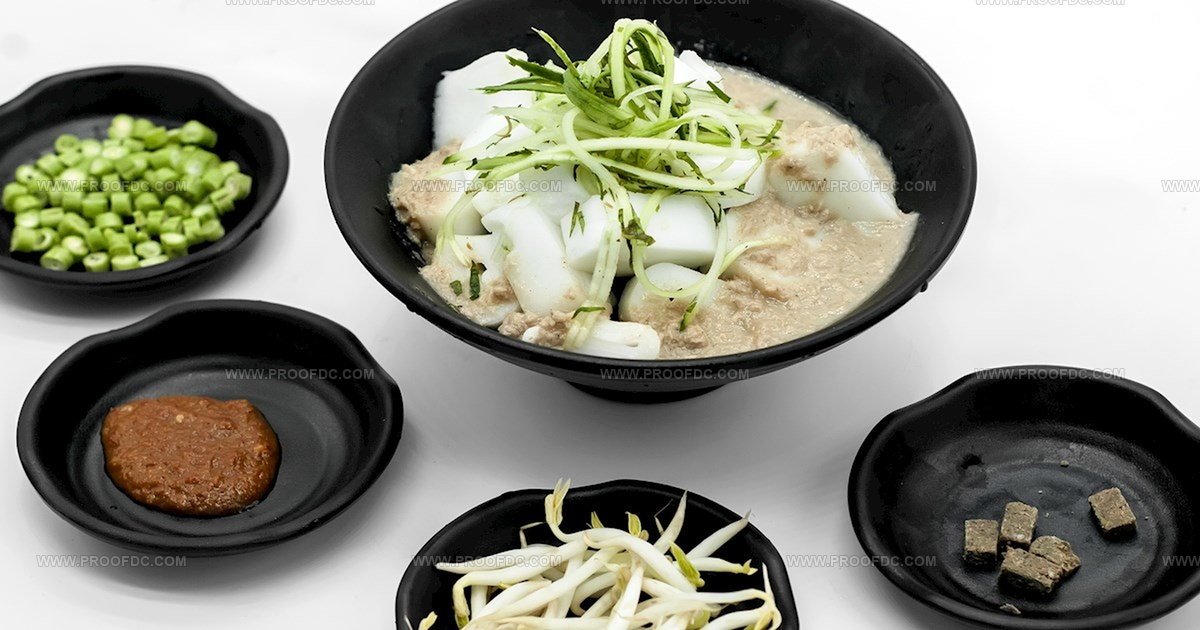
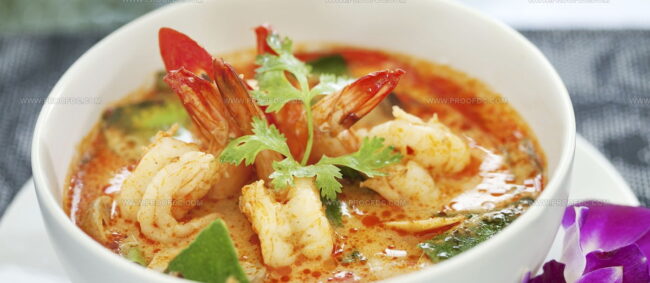
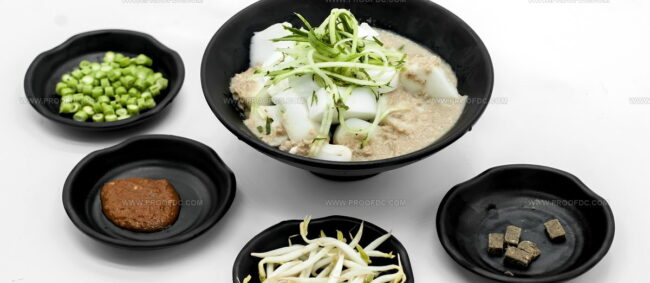
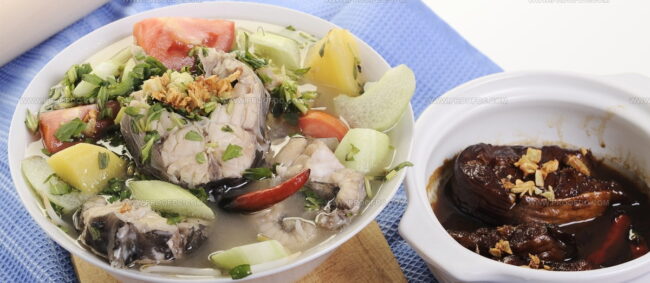
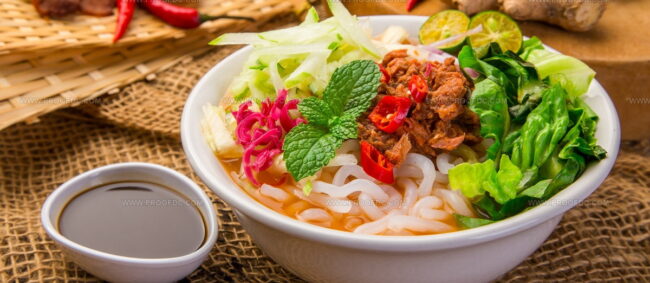
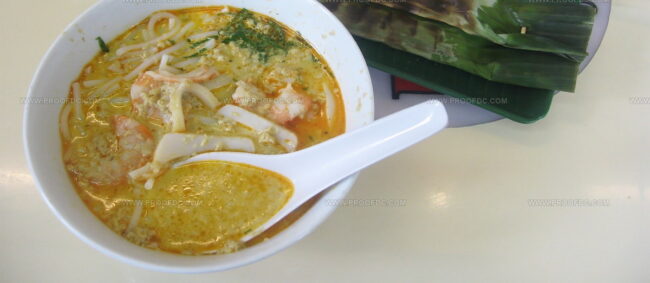
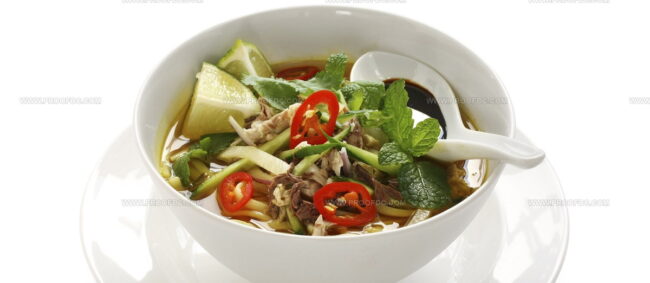
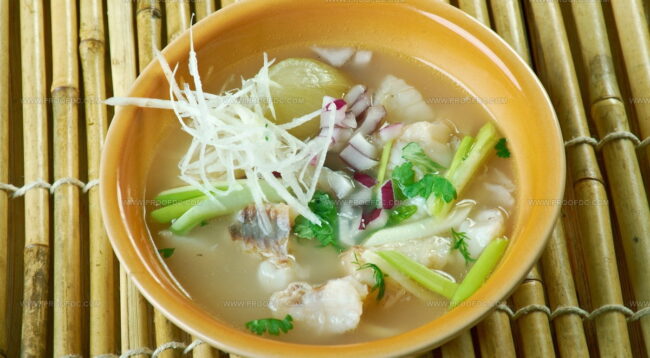
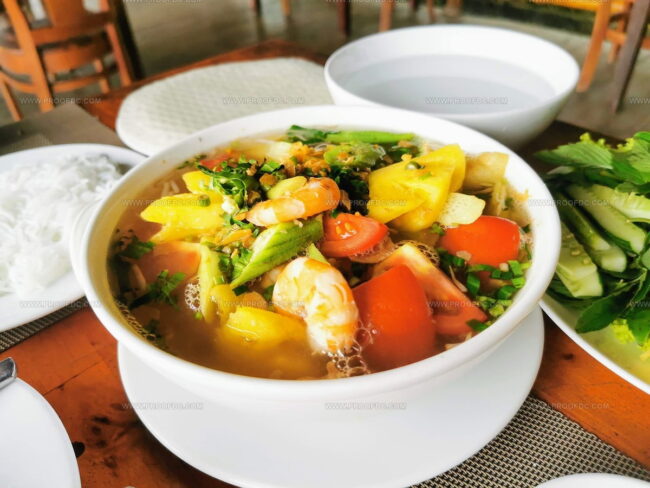
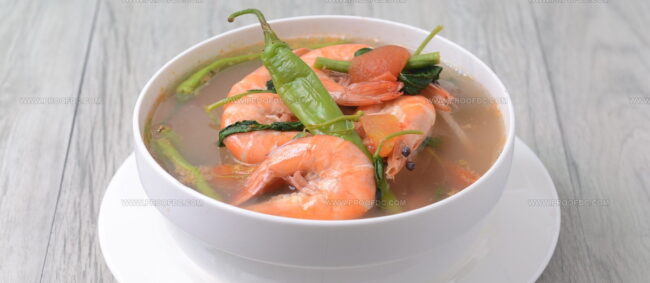
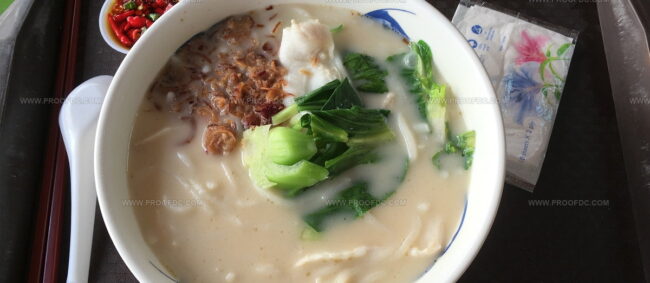
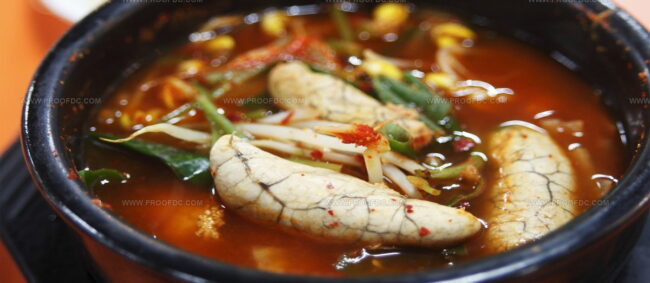
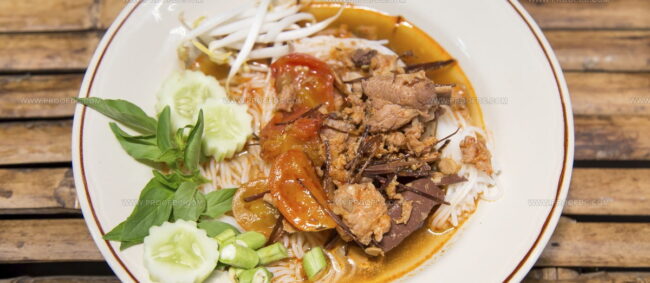
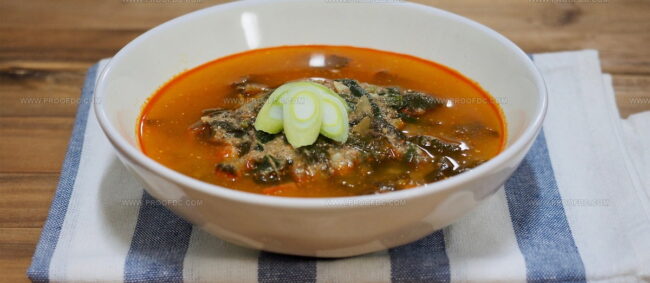
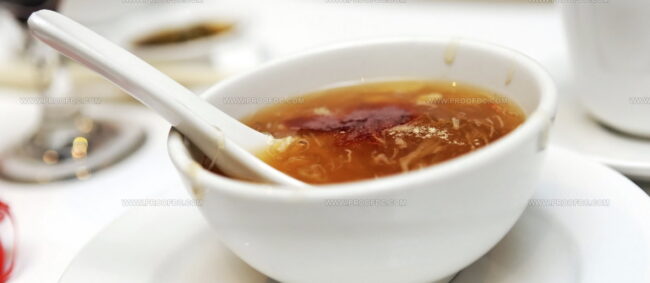
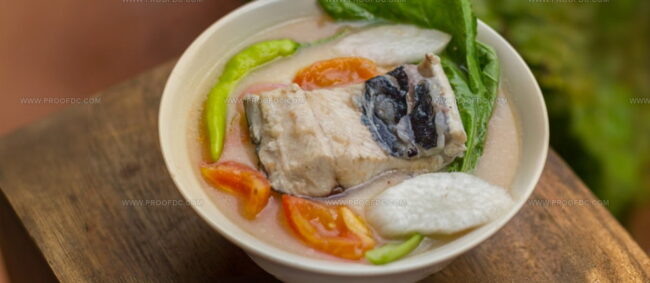
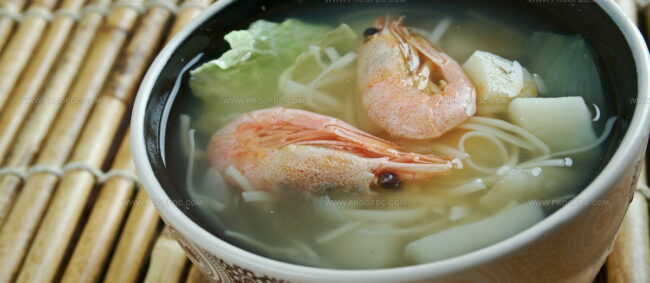
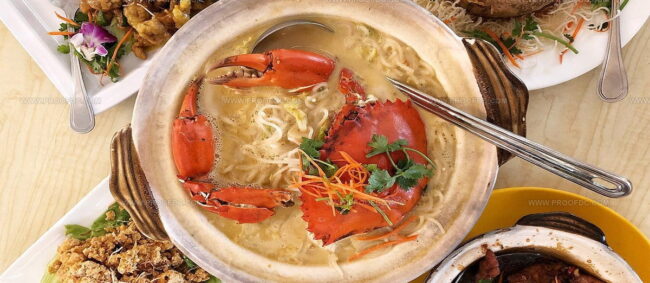
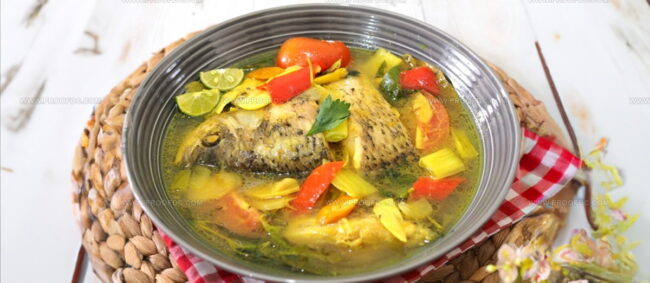
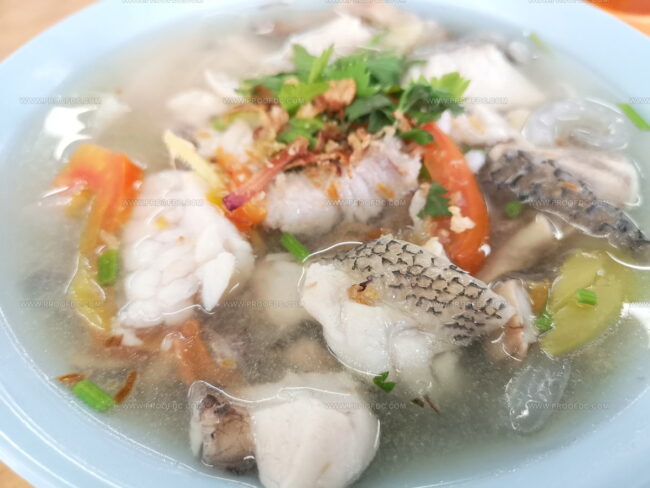
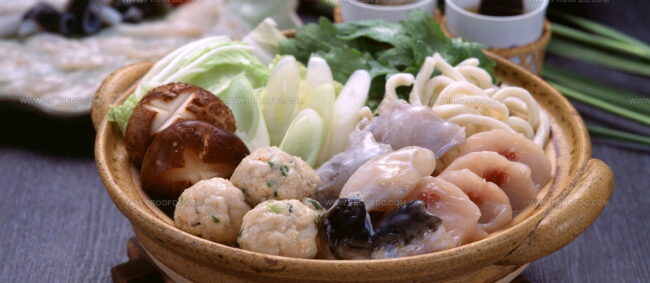
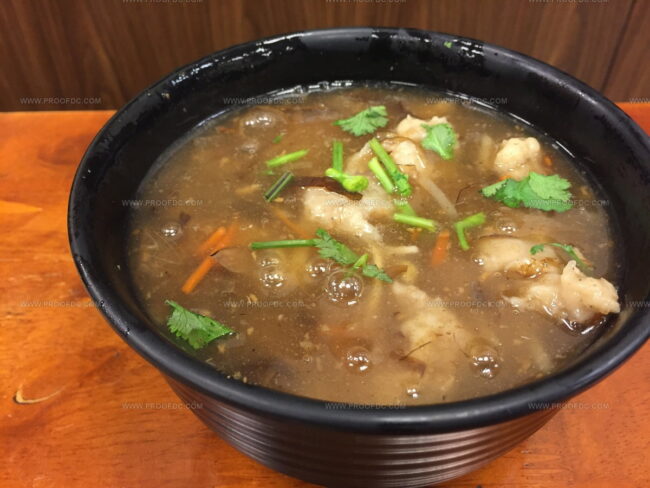
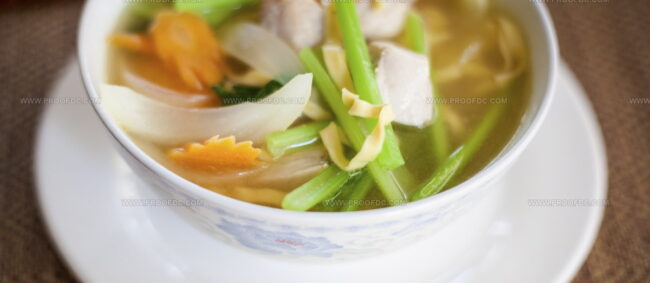
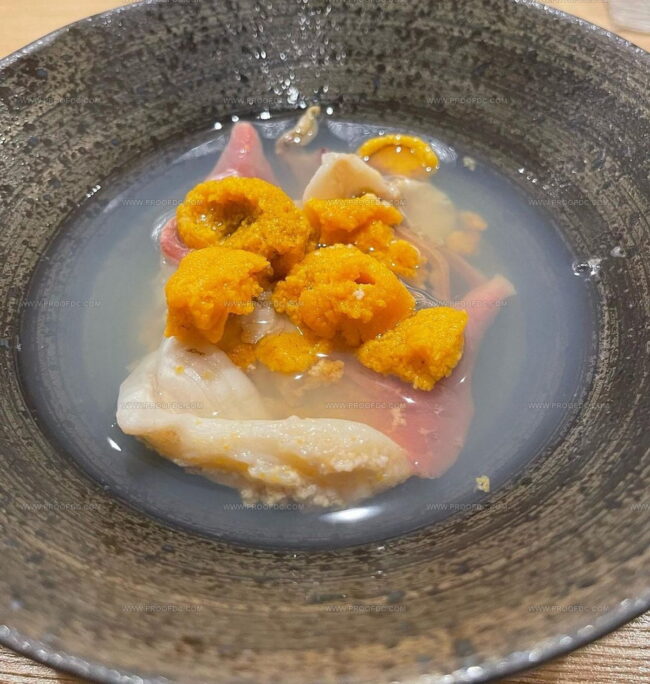
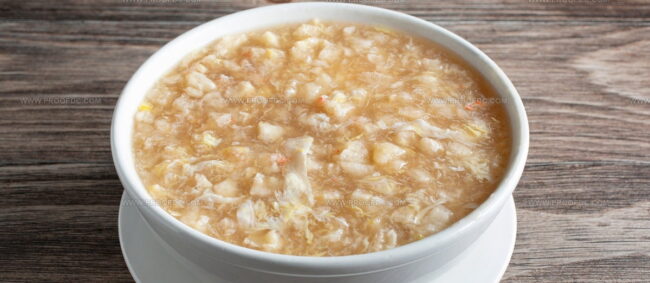
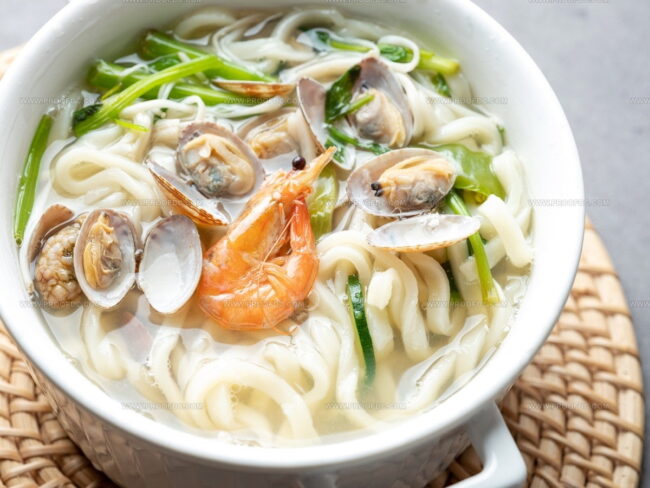
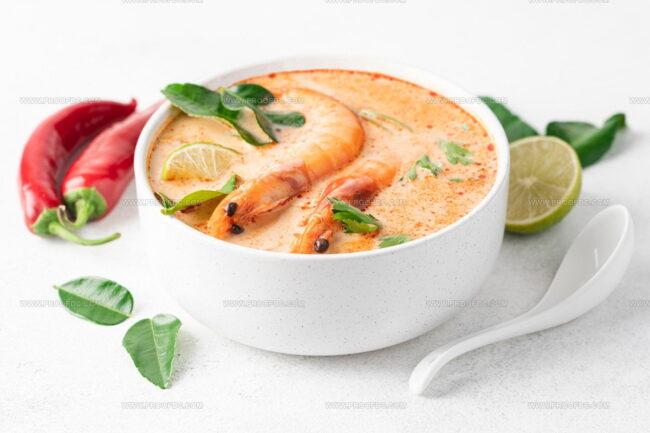
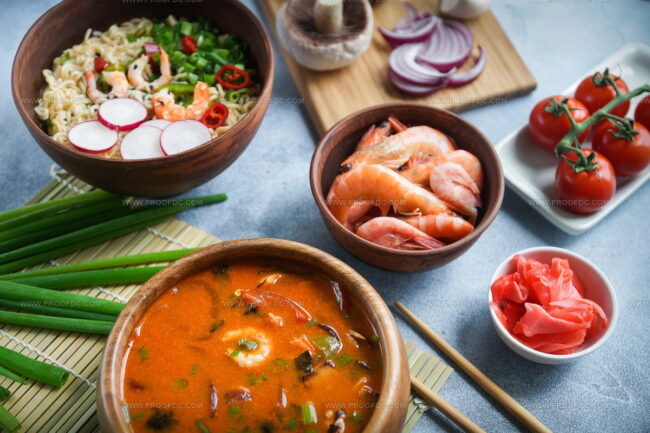
Jenna Stewart
Head Chef & Recipe Innovator
Expertise
Farm-to-Table Cooking; Seasonal Menu Development; Visual Plating Techniques; Flavor Layering and Simple Prep Hacks.
Education
The Culinary Institute of America, Hyde Park, NY
Jenna Stewart is the inventive spirit behind many of our standout dishes at Pro of Delicious Creations. A proud graduate of The Culinary Institute of America, she built her skills mastering both classic recipes and fresh, modern twists.
Now, Jenna celebrates the beauty of seasonal, local ingredients, often sourced from her garden and nearby markets, to create recipes that are bursting with flavor yet easy to follow. When she’s not experimenting in the kitchen, Jenna loves exploring nature on hikes and discovering new treasures at local co-ops.